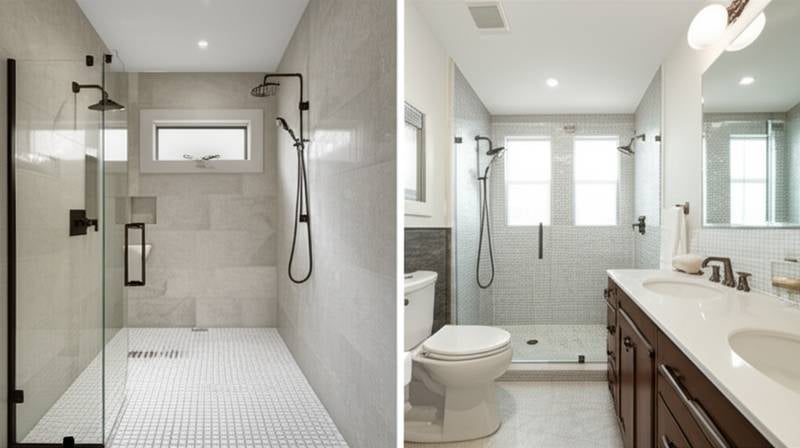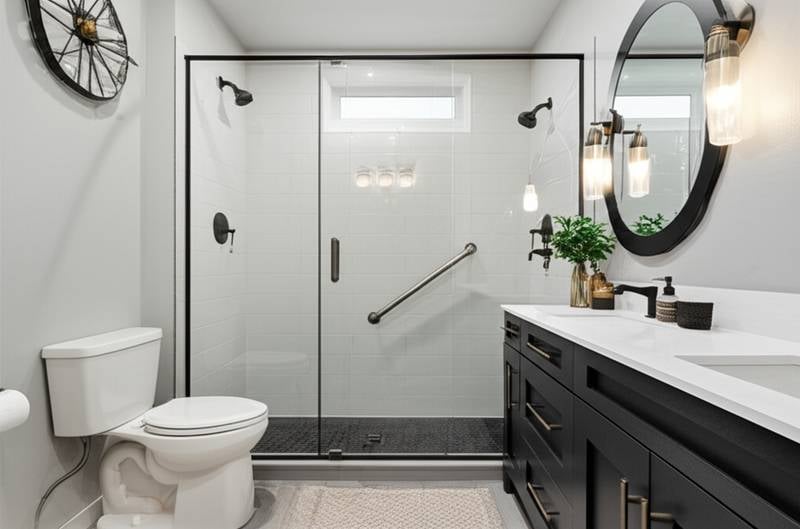Universal Design Costs for Aging in Place
Adapting a home to support aging in place combines practicality with foresight. Universal design principles emphasize accessibility, safety, and usability for individuals across all life stages. By grasping the associated costs, homeowners can implement changes that foster independence and safeguard financial resources.
Understanding Universal Design Principles
Universal design integrates features that accommodate diverse needs without drawing attention to limitations. Beyond basic aids like ramps, it encompasses elements that minimize physical effort and anticipate evolving requirements. For instance, homes designed this way facilitate seamless navigation for families today while preparing for potential mobility challenges tomorrow.
Effective implementation maintains the residence's original character. Professionals evaluate the current layout to recommend enhancements that align with architectural style. Costs fluctuate based on the property's square footage, structural conditions, and selected amenities.
Breakdown of Typical Cost Ranges
Universal design projects span a broad spectrum of expenses, influenced by project scale and location. Initial consultations with specialists often cost $200 to $500, providing a customized roadmap. Here are detailed estimates for common modifications, based on 2025 national averages:
- Bathroom enhancements: A curbless shower with integrated seating and anti-slip surfaces typically ranges from $5,000 to $15,000. Adding reinforced walls for grab bars and a comfort-height toilet adds $1,000 to $3,000.
- Kitchen modifications: Adjustable counter heights, pull-out cabinetry, and touchless faucets fall between $4,000 and $12,000. Upgrading to energy-efficient appliances that support seated preparation can increase this by 20 to 30 percent.
- Entryway and circulation upgrades: Installing a no-threshold entry ramp or widening passages to 36 inches costs $2,000 to $8,000. Smooth, non-slip flooring transitions in hallways contribute another $1,500 to $4,000.
- Comprehensive home alterations: Full layouts with accessible bedrooms, improved HVAC zoning, and smart home integrations may total $20,000 to $50,000 or more. These extensive projects often qualify for tax credits or rebates.
Engaging a certified aging-in-place specialist (CAPS) early ensures compliance with standards like those from the American with Disabilities Act. Such expertise prevents costly revisions and maximizes functionality.
Key Factors Influencing Expenses
Multiple elements determine the final budget for universal design initiatives.
- Project extent: Targeting one area, such as a primary bathroom, limits outlay to under $10,000, whereas multi-room overhauls demand significantly more.
- Structural prerequisites: Vintage properties frequently require foundational work, like electrical rewiring ($3,000 to $7,000) or plumbing relocations ($2,500 to $6,000), to accommodate modern fixtures.
- Material selections: Opting for high-end, durable options such as quartz countertops or antimicrobial tiles elevates costs by 15 to 25 percent but enhances longevity and ease of maintenance.
- Professional involvement: Skilled labor in universal design commands premiums, with hourly rates from $75 to $150. Comprehensive design services, including 3D modeling, add $1,000 to $5,000.
Regional labor markets and material availability also play roles. Homeowners in urban areas may face 10 to 20 percent higher quotes due to demand.
Essential Features for Long-Term Benefits
Certain upgrades deliver substantial returns through improved daily living and market appeal.
- Curbless showers: These eliminate barriers for effortless entry, often incorporating fold-down benches and adjustable showerheads. Installation supports universal appeal, benefiting guests with temporary injuries.
- Lever handles and fixtures: Requiring minimal force, these replace traditional knobs on doors, cabinets, and sinks. Select brushed nickel or matte black finishes to harmonize with existing decor.
- Height-adjustable surfaces: In kitchens or workspaces, hydraulic counters shift from 28 to 42 inches, accommodating wheelchairs or standing users without visual disruption.
- Strategic illumination: Motion-sensor LED systems in corridors and stairwells cost $500 to $2,000, drastically cutting fall risks by illuminating paths automatically.
- Expanded doorways and hallways: Achieving 36-inch clearances involves minimal framing adjustments, preserving wall space while enabling passage for mobility aids.
Integration examples abound: In a mid-century modern dwelling, slim-profile grab bars in satin finish blend as decorative accents. Traditional homes benefit from wooden ramps stained to match siding, ensuring aesthetic continuity.
Additional smart elements, like voice-activated controls for lights and thermostats ($1,000 to $3,000), further streamline routines and integrate with existing systems.
Strategies for Cost Management and Value Maximization
Universal design investments yield savings by averting emergencies and institutional care costs, which average $100,000 annually. Enhanced energy efficiency from features like insulated entry doors reduces utility bills by up to 15 percent.
Obtain multiple itemized bids to compare breakdowns of labor (40-50 percent of total), materials (30-40 percent), and permits (5-10 percent). Phased implementations, starting with high-traffic zones, distribute expenses across months or years.
Resale advantages are notable: Homes with these adaptations sell 10 to 20 percent faster and command premiums in competitive markets. Document modifications for potential rebates through programs like Medicare's home safety assessments.
Collaborating with Qualified Experts
Select contractors with credentials in accessible remodeling, such as membership in the National Association of Home Builders. They provide insights into code-compliant solutions tailored to your residence's unique attributes.
Initial meetings focus on vision alignment, budget constraints, and timelines. Reputable firms offer warranties on workmanship, typically 1 to 5 years, ensuring peace of mind.
Implementing Your Aging-in-Place Plan
Begin by auditing high-use areas for potential hazards, using free online checklists from accessibility organizations. Prioritize modifications based on immediate needs, such as bathroom safety, before expanding to whole-home enhancements.
Partner with a specialist to draft a phased blueprint that evolves with your circumstances. These targeted investments not only secure physical well-being but also cultivate a residence that adapts gracefully to life's progression.











